|
Reports of my lunch have been much exaggerated
I am
delighted that one publisher at least (Transworld) has taken recent reports of
my demise with a pinch of salt and invited me to a splendid lunch for three of
their leading authors.
Naturally,
Professor Barry Forshaw was there along with the great and good of the crime
fiction reviewing world, to break bread with veteran bestseller Robert Goddard.

I had the
pleasure of reading Robert’s latest novel, Panic Room, which is published by
Bantam later this month. After his success with a trio of historical
adventures, Robert returns to the contemporary thriller (perhaps even slightly
futuristic) in Panic Room which has twin narrators/protagonists, one of them a
spiky young woman with lots of attitude and the other, a down-trodden estate
agent. Despite this seemingly unsympathetic pairing, Goddard makes the
characters come alive, although they are far from likeable.
The plot
revolves around a mysterious and impenetrable ‘panic room’ (or is it?) in a
super-rich businessman’s Cornish house and the various attempts to find out
what’s in it, or what’s likely to come out of it. The trail our reluctant heroes
follow leads to Switzerland, via an old murder case in Cornwall, a vengeful
Cornish witch (my favourite character), a high-flying female student missing
for more than twenty years, assorted gangsters and hit-men, and an apocalyptic
threat worthy of Michael Crichton or, dare one say it, Dan Brown.
Amazingly,
Goddard holds this all together, his pacing and unfussy prose smoothing the way
to the suspensions of disbelief required as the plot escalates.
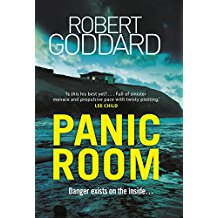
One of
Transworld’s rising stars, published in the Doubleday imprint, is Joseph Knox
whose youthful enthusiasm and fresh-faced countenance belies his reputation as
the author of some powerfully dark crime fiction and his reputation as being
‘the best-read crime writer ever’.

Although
relatively new to the crime scene as a writer and somewhat dauntingly seated
between myself and Karen Robinson of The
Sunday Times, Joseph was present to celebrate the publication of his second
novel The Smiling Man, which is published this week.
Following
on from his much-praised debut Sirens, Knox continues the
mis-adventures of night shift of ‘compromised’ police detective Aiden Waits as
he stumbles through the grim and unforgiving Manchester underworld, ostensibly
in search of the identity of an un-named, unclaimed body found in an empty
hotel. In fact, Waits ends up searching for much more, including things about
his own past which he perhaps should leave unfound.
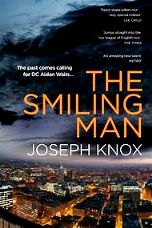
From his
over-bearing boss to his rather disgusting night shift partner, not to mention
seedy bars and brothels, Waits has created his own purgatory out of a
night-time Manchester which positively drips with crime and violence. This is
not a cosy mystery in any sense and the D-I-Y enthusiast may wince at inventive
uses of hammers and nail guns.
The third
Transworld author, whom I was delighted to meet for the first time, was the
vivacious, award-winning, Belinda Bauer.

Belinda’s
new novel Snap appears from Bantam in May, so more of that anon, but a discussion
point at this literary lunch was which very famous writer had used the same
title for a 1974 crime novel? Belinda herself would have been far too young to
be aware of such a novel at the time, and only a well-read crime writer like
Joseph Knox would be likely to know the answer.
Kim Jong Choco Pie
Perhaps a
touch of Ski Sunday diplomacy at the Winter Olympics might resolve the decades
of mistrust and animosity between North and South Korea but in case it doesn’t,
there’s a very timely thriller coming in May from Harvill Secker.
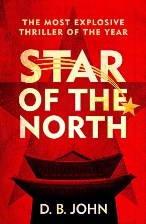
Star
of the North by D.B.
John, about whom I know very little except that he has lived in South Korea and
visited the North, is billed as ‘the most explosive thriller of the year’. In
the advance publicity, the author himself points out that given the current
American president, ‘the world sometimes seems a mere tweet away from nuclear
war’.
One
strand of the plot of Star of the North, though probably
not a vital one, involves the Choco Pie, an everyday snack in South Korea.
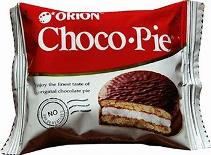
The
publisher generously included an actual Choco Pie with advance proof copies.
Never having seen this delicacy before, I felt I had to try it. My conclusion
was that I realised what a gourmet treat Wagon Wheels are.
Still on
things Korean and despite a New Year’s resolution to avoid any more crime
novels which come blurbed with the exhortation “How far will you go…?”, I am
tempted by The Good Son by You-jeong Jeong, to be published by Little Brown
in May.
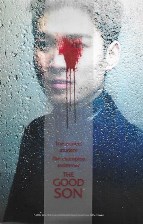
Although
her crime novels have already been translated into Chinese, Japanese, Thai,
Vietnamese and German, The Good Son is the first to appear
in English, although she is already rated as South Korea’s leading thriller
writer and her novels have been compared to American
Psycho, Misery and A Clockwork Orange,
so I suspect they are not for the faint-hearted.
Rolodex Days
I am
used, for legal reasons, to missing out on many a sumptuous party thrown by
London’s publishing houses and rarely complain or even mention the fact any
more. However, I was looking forward (when I heard about it on the crime
fiction grapevine) to the 2018 crime party thrown by Simon & Schuster,
where I hoped to meet old friends and writers whose work I admire, including
Rob Ryan, Kate Rhodes and Felix Francis, but sadly no invitation was
forthcoming.

Some
judicious enquiries revealed that I actually had been invited, back in
December, by email – but to an email address which I have not used for nearly a
year. This I found confusing as I regularly receive emails from editorial and
publicity staff at Simon & Schuster, but then I discovered that the sending
of invitations had been ‘contracted out’ as it were, to a firm called Gorkana.
(Which I always thought was a successor to the OGPU or NKVD.)
Gorkana,
it seems, is a company which supplies mailing and contacts’ lists for the PR
industry – and there’s nothing wrong with that if the lists they supply are
kept up to date. In my day – a phrase I have been struggling not to use for
several years – publishers kept their own lists of useful contacts in Rolodex
files on leather-topped desks which smelled faintly of stale tobacco and
spilled red wine.
I was
musing on this recently as I waded through snow drifts to the next village,
Bramley End, where a Post Office still miraculously still survives for the
purchase of premium bonds and postal orders, the sending of telegrams and, of
course, the provision of stamps.
Now I
realise I have been somewhat out of touch lately, but the latest issue of
commemorative stamps came as something of a surprise.
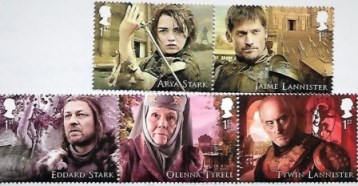
Have I
not been paying attention or have our Royal Family really changed that much?
Still Kiss-kissing, Bang-banging
One of
the joys of having written Kiss Kiss Bang Bang, my ‘reader’s
history’ of the boom in British thrillers when I was but a lad in short pants
is that I keep discovering books and authors from the period I did not know, or
fully appreciate, at the time. (I was very young…)
For
example, I have recently ‘re-discovered’ (okay – I’d forgotten it) the 1970
thriller The Man Who Walked on Diamonds by James Quartermain.
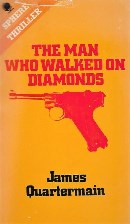
Possibly
the best-known of Quartermain’s thrillers involving the theft and smuggling of
diamonds (there were four with ‘Diamond’ in the title), the book’s blurb is
rather unsettling as highlights the predicament of hero Raven who finds himself
looking down the barrel of a Luger held
by six feet four of homosexual sadism…
That
aside, I found it interesting that the book was dedicated to Venetia and Edward
Woodward, then playing the iconic assassin/spy Callan in the hit TV series. This prompted me to find out more
about author James Quartermain.
The
pen-name Quartermain hid the identity of James Broom-Lynne (1916-1995) who
turns out to have been a near-neighbour of mine, as a long-time resident of
East Bergholt in Suffolk. Broom-Lynne was an author, artist, playwright and
illustrator and apart from writing thrillers himself, he designed the jackets
of the novels of some famous authors, including H.E. Bates, Christianna Brand and Dick Francis.
Perhaps
most interesting to fans of Great British thrillers of the 1960s is that James
Broom-Lynne was responsible for the jackets of the first two novels by Adam
Diment, The Dolly Dolly Spy (1967) and The Great Spy Race (1968).
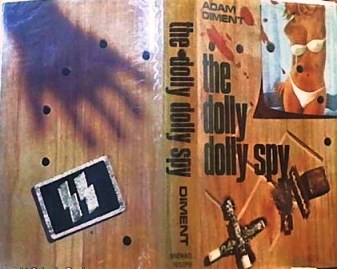
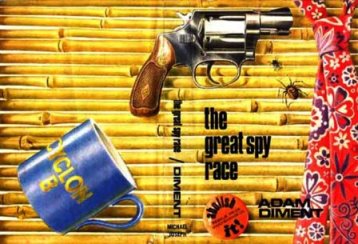
Hopefully
proving that I am not alone and slightly sad in my enthusiasm for classic
British thrillers, there will be a special panel at Crimefest in Bristol in May (on Saturday the 19th to be
precise) chaired by the erudite Jake Kerridge of the Daily Telegraph entitled Kiss Kiss Bang Bang: Classic Thrillers,
which says it all really. I will be participating, as will Lee Child, C.J.
Carver and Zoë Sharp and afterwards I expect Bristol’s second-hand bookshops to
do a roaring trade.
|
|
Thriller Island
One of
the best-loved thriller writers from the boom time of the Sixties and Seventies
was Desmond Bagley (1923-83), who for many years made his home on the island of
Guernsey.
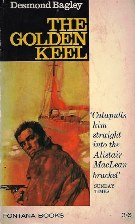
Now
Bagley’s legacy of exciting, globe-trotting thrillers will be celebrated at the
Guernsey Literary Festival next month with an exhibition launched with a talk
by dedicated fan Phil Eastwood who runs the excellent website www.thebagleybrief.com.
Society Update
For legal
reasons I could not attend (yet again) the annual crime fiction party thrown by
Penguin, nor the more recently established one by publisher Bonnier. I am sure
both imprints took the opportunity to tell their favoured guests about their
crime fiction plans for the coming year. I have, of course, no idea what those
are.
New Noirs
There
seems no end to the application of noir to
just about anything to describe (or invent) a new sub-genre of crime fiction.
We’ve had Tartan Noir, Irish Noir, Ozark Noir (!), Nordic Noir, Scandi Noir,
Euro Noir and the currently all-pervasive Domestic Noir.
But now
I’ve come across a new designation – Narco-Lit
– which refers to the murderous world of drugs, cartels, corruption and murder
in Mexico. It even has a recognised founder in Elmer Mendoza, whose new novel Name
of the Dog is out now from MacLehose Press.
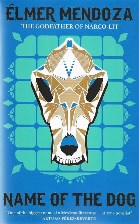
Featuring
Mendoza’s world-weary (who wouldn’t be?) Mexican homicide detective Edgar
‘Lefty’ Mendieta, Name of the Dog is a violent, staccato blast of a book which
would fit anyone’s definition of ‘noir’ – even mine. It also includes some
fascinating detail on Mexican food and drink, from Agua de Jamaica to Pibil.
Elmer
Mendoza is known as ‘the Godfather of Narco-Lit’ and I think the title
well-deserved. The designation ‘-Lit’ may also catch on in crime fiction,
though I can’t think of any good examples at the moment, but it would be nice
to see it used in a context other than ‘Chick-Lit’.
It will
never replace the increasingly ubiquitous ‘noir’ though, if only thanks to the
efforts of Barry Forshaw, who has another Pocket Essential guide coming out
next month.
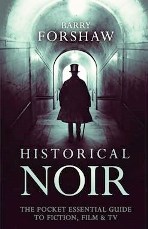
Historical
Noir, I am told, covers
crime fiction (plus television and film) set more than fifty years ago. I have
to take issue with that definition, partly as it excludes my own ‘continuation’
novels featuring Margery Allingham’s famous detective Albert Campion which are
set forty-nine years ago (which may be being picky, but I had to get the plug in),
but more importantly, because I insist that any book set in a period when I was
alive isn’t ‘history’.
Barry is
the author of Brit Noir, Nordic Noir, American Noir and Euro Noir but claims that Historical Noir will be his last in
his set of noirish encyclopaedias, which is a great pity as I was looking
forward to Neeh-Noir: the role of the
police siren in crime fiction. (With apologies to the person who came up
with that joke. You know who you are.)
Registered Titles
February
is a favourite month among crime writers, at least British ones, as that is
when the marvellous Public Lending Right system reimburses authors for copies
loaned in libraries rather than sold to the public. It is a time when meat goes
back on the menu and the children get new shoes, but funds can only be
allocated to authors who have registered the titles they have produced or
contributed to.
Whilst
casually checking my own bibliography on the jolly old interweb, a book
appeared which I had not seen before.

Now
although I have in the past worked with Maxim Jakubowski on the Fresh Blood anthologies, I cannot claim
credit for any input into this one and yet I appear to be listed as a
co-editor.

I can
assure Maxim that I have not registered this title as part of my PLR claim and
that although I did once pitch the idea of The
Book of Erotic Mammoths, nothing ever came of it.
Not Strictly Nordic
Derek B.
Miller is an American who lives in Oslo and has a third novel, American
By Day, out from Doubleday next month, the title being a no doubt
intentional play on that of his 2013 debut thriller, Norwegian By Night.
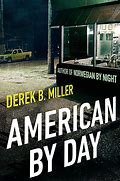
In the
promotional material which accompanied proofs of his new book, the plaudits and
awards for that first novel are proudly listed, particularly the winning of the
Crime Writers’ Association’s John Creasey New Blood Dagger – an award which
should get an award for long-windedness.
Oddly,
the one award not mentioned in the
advance publicity was the Last Laugh Award for best comic crime novel, given to
Norwegian
By Night at the Crimefest convention.
I was
there, in Bristol in 2014, on the night the announcement was made, and it came
as something of a surprise to the better-read among the audience (and almost
certainly the author!) that Miller’s
novel had been classed as a comedy. However, the fact that it won the Last
Laugh, beating novels by those masters of murderous mirth Carl Hiaasen and
Colin Bateman did raise many a chuckle and the odd guffaw.
Remembering Colin
Although
it will be a tearful occasion, I will be honoured to be a guest at the memorial
service for my old friend Colin Dexter, who died last year, to be held in
Oxford next month.
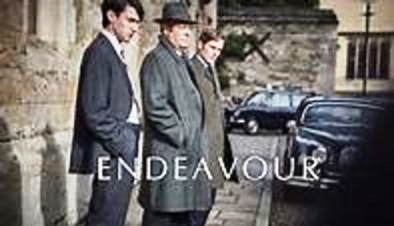
In the
meantime, the excellent new series of Endeavour
is keeping the Morse/Dexter flame alive in more ways than one. The
producers have, to their credit, continued the long-standing tradition of cameo
appearances by the author in episodes of Inspector
Morse. As the real Colin Dexter is sadly no longer available, images of him
are being slipped in to each episode to surprise and delight those viewers
quick enough to spot them. I have already noted a picture of Colin in a copy of
a newspaper, featured on a poster in a railway station and in a portrait
painting, in full dress uniform, in an army Officer’s Mess, but I am sure I
must have missed some.
I have
also discovered French editions of Colin’s Inspector Morse which have opted for
a co-ordinated series of British ale brands as their cover art on the basis
that Morse liked the odd pint of ale.
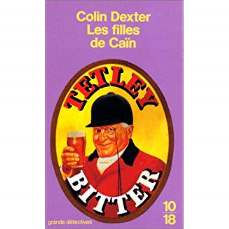 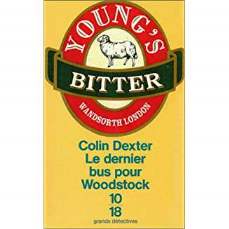
I have
selected these two not necessarily because they are my favourite Morse stories
(though one comes high on my list), but they are among my favourite ales.
I do have
one important point of order to raise with the French publisher, however. The
French edition of The Silent World of Nicholas Quinn does not actually show an
ale.
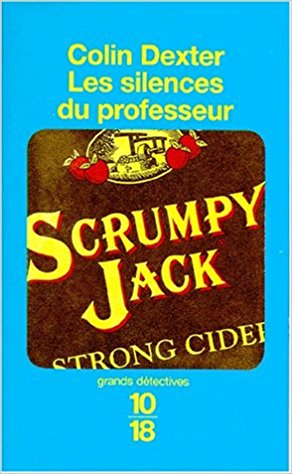
Can
anyone remember Morse ever drinking cider?
Get Carter (Brown, that is)
In his
seminal work Bloody Murder, the critic and crime writer Julian Symons called
them ‘the Big Producers’ – authors who wrote a great many books with interchangeable
series heroes on a production-line basis resulting in ‘a ready-made product
like cornflakes or puffed wheat’(sic). Symons is pretty disparaging about their
output and contribution to the genre (negligible) but does admit that it was
often a case of never mind the quality, feel the backlist.
Among
these ‘Big Producers’ Symons lists James Hadley Chase, Peter Cheyney and John
Creasey, but not, surprisingly, Carter Brown, an author said to be responsible
for 322 novels, 12 long-running series and sales of over 100 million books.
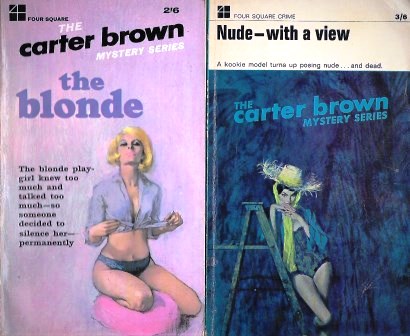
There was
probably a good reason, other than intellectual snobbery, why Symons refused to
get this particular Carter whose prolific output covered the three decades up
to 1980. His books were, to put it politely, disposable; the pulpiest of pulp
fiction with lurid covers and titles such as Booty for a Babe and The
Bump and Grind Murders to match, although superior to the generic pulp
output of ‘Hank Janson’. All went out of print, except in France (where they
were very popular) more than thirty years ago although recently the innovative
Stark House Press in America have republished six ‘Carter Browns’ in two
compendium editions
Carter
Brown was a pen-name – originally Peter Carter Brown – used by Alan Geoffrey
Yates (1923-1985), who was born in London but moved to Australia in 1948. He
became a public relations man for the airline Qantas and began writing pulp
fiction in 1953. Legend has it that he
was contracted to write one short novel (around 44,000 words) and two
full-length ones per month. Most were
set in America, though he had published at least 30 titles before he visited
the country.
Two of
his most popular, and interchangeable, series were those featuring Rich Holman,
the tough, unorthodox, streetwise Hollywood private eye (as in Nude
– With A View) and those starring Lt Al Wheeler, the tough, unorthodox,
streetwise Los Angeles policeman (as in The Blonde). He also produced series
starring Mavis Seidlitz, the ‘torrid blonde private eye’, and Danny Boyd, ‘New
York’s toughest private eye’.
Not only
were the heroes/detectives interchangeable but often so were the crimes, with
naked blondes being stabbed to death a common occurrence, and although readable
enough (allowing for the political incorrectness of the period), they were
never likely to trouble the reputations of Ross Macdonald or Ed McBain or a
host of other superior craftsmen.
What was
interesting, and probably a hangover from the ‘Hank Janson’ days of pulp
publishing, was the fact that all the Carter Brown books (as far as I can
tell), whoever the lead character, were marketed in the UK not designated by
their particular hero (or heroine, but mostly hero), but were generically
lumped together as The Carter Brown
Mystery Series. A case of the
pen-name becoming the brand, with no further information required by the
potential reader, or indeed offered by the publisher. Perhaps at one time, you
really could judge a book by its cover.
Carter
Brown is almost certainly better remembered in France than he is here or America,
perhaps even in his adopted Australia. One of his books – and I would love to
know which one – supposedly received an award in France for the most whiskies drunk in a single novel.
Wrap
up warm!
The
Beast from the East,
(aka
The Ripster).
|